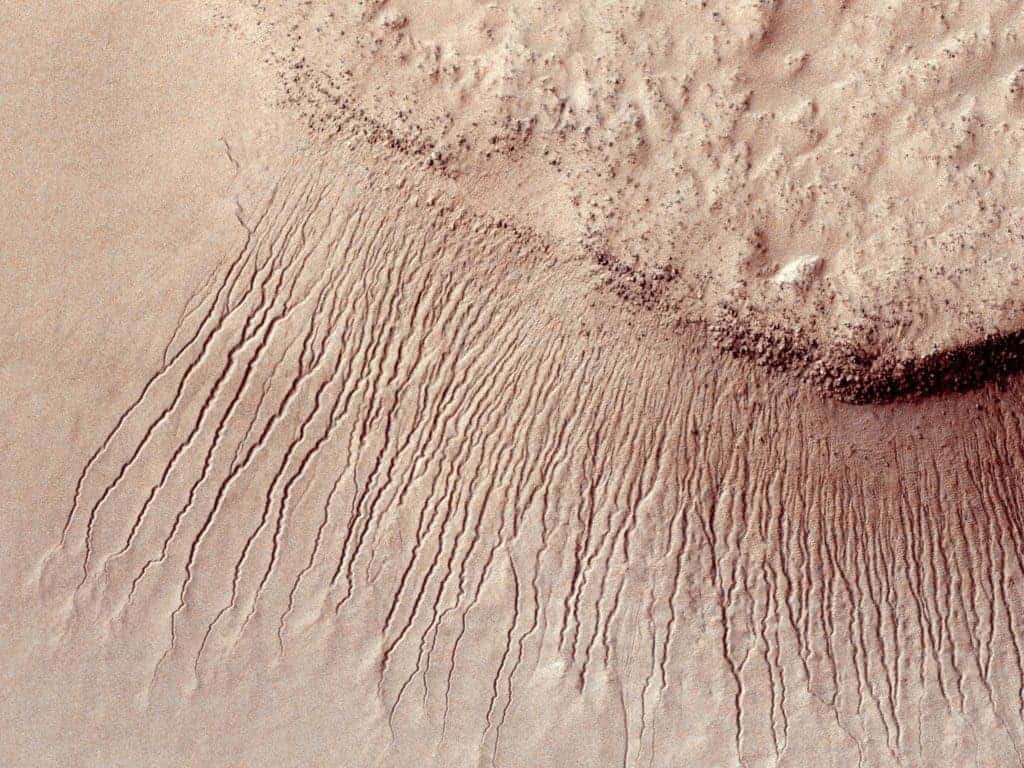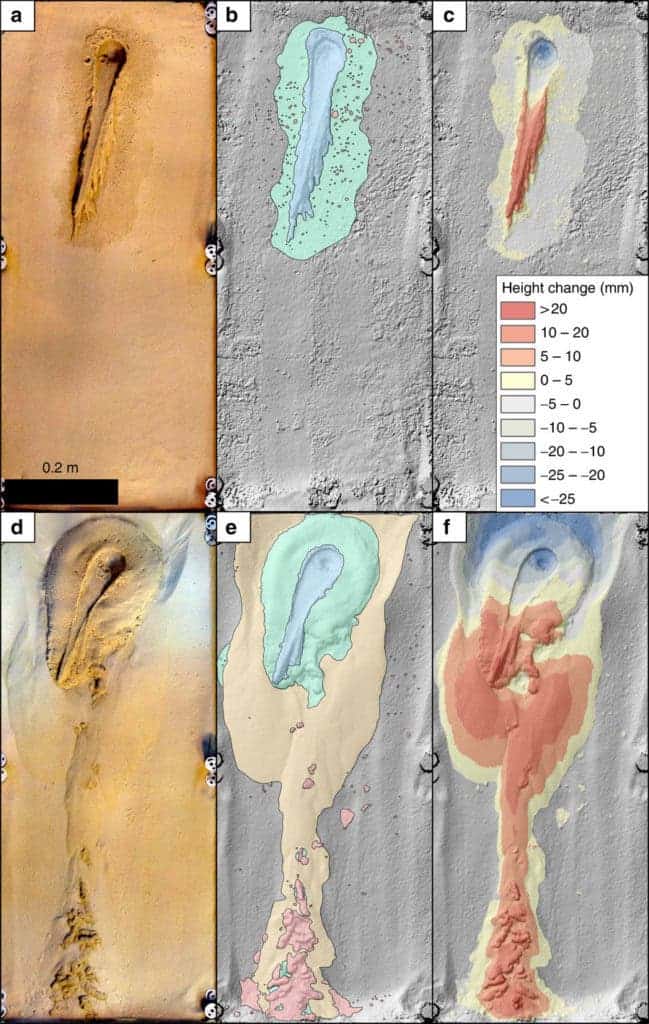Researchers at The Open University (OU) could finally put the mystery regarding the formation of Mars’ land features to rest. The red planet’s landscapes, they report, is formed by small amounts of water boiling in the thin atmosphere.

Image credits NASA / Mars Reconnaissance Orbiter.
There’s a good reason why Mars doesn’t make it very high on the ‘best spots for watersports’ lists for — it’s quite dry. There are no oceans, no rivers, no lakes here. There’s also the issue of its whispy-thin but the decidedly deadly atmosphere.
This dryness has also puzzled researchers trying to understand the planet’s landscapes for a long time now. On Earth, water has a central role to play in shaping landscapes. It provides sediment mobility (i.e. it moves particles of soil and rocks around), chisels and polishes through erosion, and adds the final details through chemical alteration. Mars, however, showcases some breathtaking features despite its relative absence of water. The mystery only compounds when you factor in its atmosphere, which is far less able than Earth’s to influence landscapes.
Make do
To get to the bottom of things, a group of scientists from the OU used the university’s Mars Simulation Chamber to re-create conditions on Mars and see how they influence land feature formation. Their work revealed that because of our neighbor’s thin atmosphere (about 0.7% as thick as Earth’s, at roughly 7 mbar) water will spontaneously, and violently, boil on its surface. During periods when Mars’ surface is relatively warm, even a small quantity of water flowing to the surface can move large amounts of sand or other sediments. The team describes the process as material or pellets of material “levitating” on the cushion of vapor released by boiling waters.
Compared to what we’re used to seeing on Earth, even small amounts of liquid water running across Mars’ surface could thus form the large dune flows, gullies, and other characteristic features. Here you can see the difference in sediment flow on the simulated Martian surface during a “cold” (no boil) and “warm” (boil) run. These runs would correspond to mean temperatures on Mars’ surface during cold seasons and warmer ones (i.e. Martian summer.)

A, d, photographs of the “cold” and “warm” experiments respectively.
D, e, hillshaded relief digital elevation models (DEM) overlain by process-zone maps giving the spatial extent of the different transport types (blue = overland flow, green = percolation, red = pellets, yellow = dry avalanches/saltation) for “cold” (b) and “warm” (e) experiments.
C, F, elevation differences between the start and end of the experiment for “cold” and “warm” runs respectively.
Flow direction is from top to bottom and the same scale is used for all images.
Image credits Jan Raack et al., 2018, N.Comm.
“Whilst planetary scientists already know that the surface of Mars has ‘mass-wasting’ features — such as dune flows, gullies, and recurring slope lineae — which occur as a result of sediment transportation down a slope, the debate about what is forming them continues,” according to Dr Jan Raack, Marie Skłodowska-Curie Research Fellow at The Open University and lead author of the paper.
“Our research has discovered that this levitation effect caused by boiling water under low pressure enables the rapid transport of sand and sediment across the surface. This is a new geological phenomenon, which doesn’t happen on Earth, and could be vital to understanding similar processes on other planetary surfaces.”
The team reports that levitation processes can increase sediment transport nine-fold (as compared to ‘cold’ runs with no boiling and ‘warm’ runs), reducing the amount of water needed to move a given volume of material “by nearly an order of magnitude.” Finally, they calculate that Mars’ reduced gravitational pull would allow these processes to persist up to 48 times longer. While the team admits that this number “is likely to be an overestimation,” even a 10-times longer persistence of the levitation processes “would result in a decameter-extent of sediment disturbance, which should be visible in remote sensing images”. The sediment pellets themselves would likely not be visible in remote-sensing images.
Overall, the team says that levitation processes associated with small water flows on Mars’ surface features have been “widely underestimated”, and call for more observational studies on the matter.
“We need to carry out more research into how water levitates on Mars, and missions such as the ESA ExoMars 2020 Rover will provide vital insight to help us better understand our closest neighbour.”
Sediment transport where this mechanism is active is about nine times greater than without this effect, reducing the amount of water required to transport comparable sediment volumes by nearly an order of magnitude. Our calculations show that the effect of levitation could persist up to ~48 times longer under reduced Martian gravity.
The paper “Water induced sediment levitation enhances downslope transport on Mars” has been published in the journal Nature Communications.


